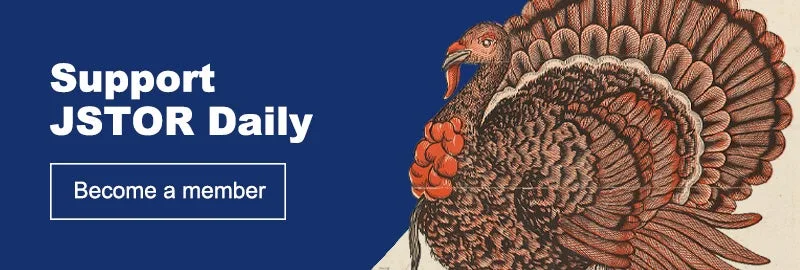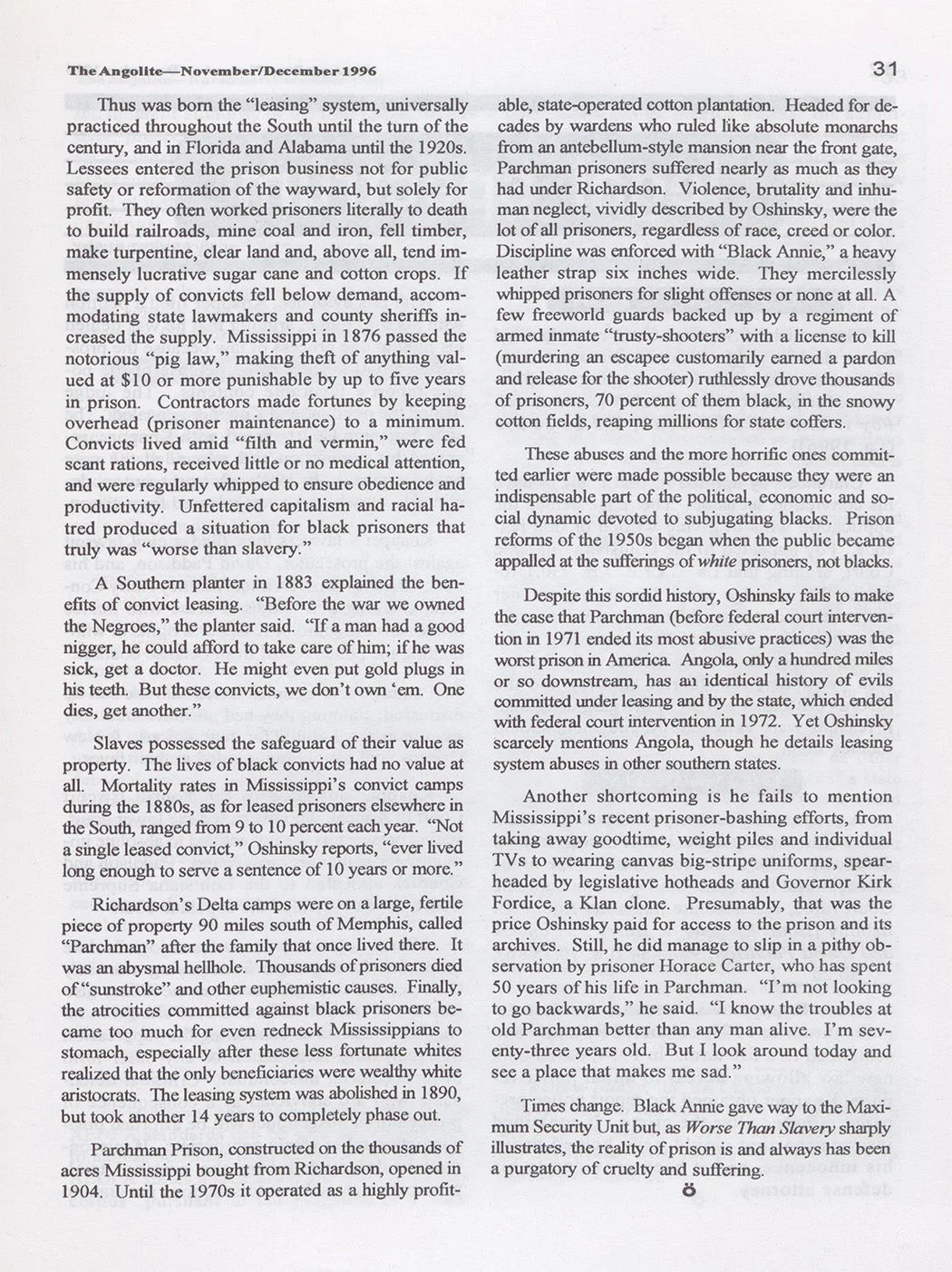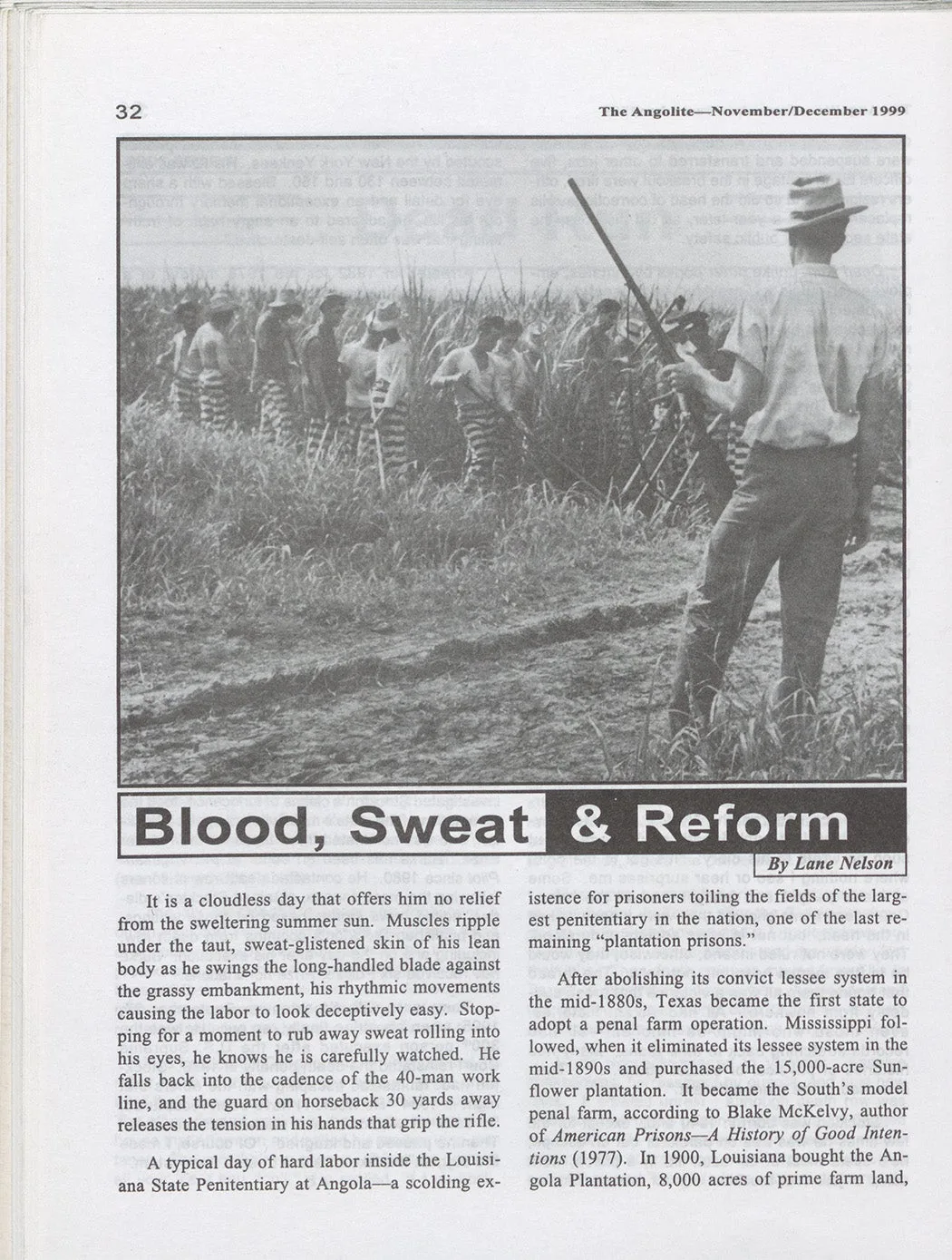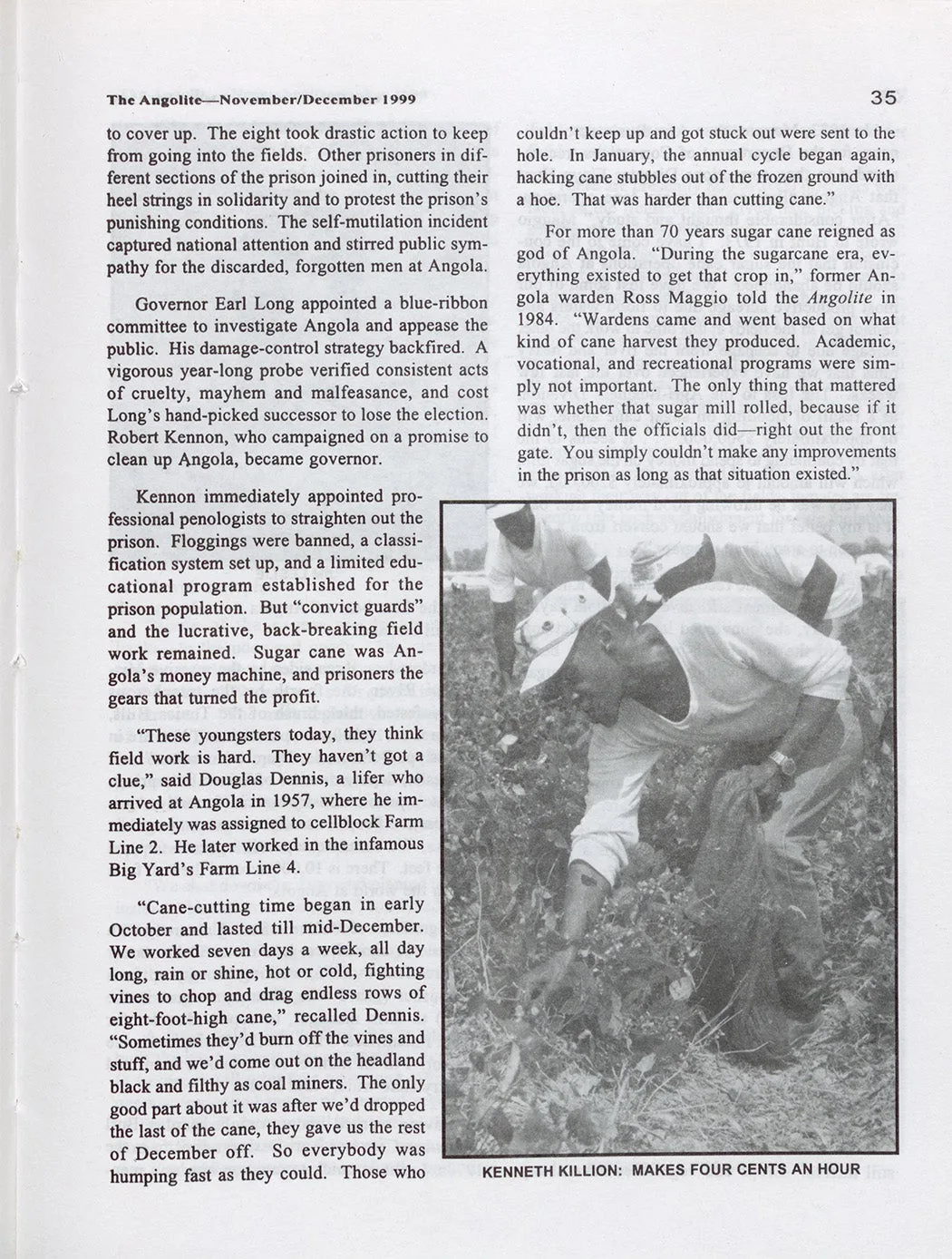Ronald Smith, a fifty-seven-year-old lifer who worked on a chain gang in Dixie County, Florida, remembers his ankles being shackled while he used a slingblade to clear weeds from the snake-filled canals alongside the sugarcane.
“If we refused to work we had to stand on top of a wooden box in the sun. It was called ‘doin’ the scarecrow’ and some guys passed out from the heat,” he recalls.
This isn’t a recollection from the 1800s, but an account of a “gun squad” from 1988, where correctional officers on horseback slung 12-gauge shotguns over their shoulders and berated incarcerated workers as they toiled outside.
The stories of antebellum slavery and modern-day prison labor are deeply intertwined in the Deep South of the United States, exemplified by the prison plantation. While chattel slavery was legally banned in the country in 1865, the practice continues in the form of hard labor by prisoners, taking place on the blood-stained fields of Mississippi, Florida, Louisiana, Arkansas, Texas, Pennsylvania, New York, and more; many states force incarcerated people to toil the earth for repentance.
And while the Thirteenth Amendment to the US Constitution technically abolished slavery, the addition of the phrase, “except as punishment for a crime whereof the party shall have been duly convicted,” means that hundreds of thousands of Americans are currently enslaved—as punishment for a crime—and it’s expressly constitutional.
Prison plantations are now common in the carceral system, even beyond the South. The estimated value of commodities produced is around $2 billion per year. Incarcerated laborers are like indentured servants who receive no pay, no benefits, no legal protections, and are punished with solitary confinement for noncompliance in the fields.
Present day farms at penitentiaries, often worked by a Black majority, echo a time of inhumane brutality in this country’s slaveholding history, and a direct link can be made from the seventeenth century cotton plantation to the sugar cane fields of Florida prisons today.
Plantation History
Slave plantations in the United States existed from the early 1600s to the late 1800s as an agricultural and livestock business, run by masters and overseers in an oppressive environment of fear and violence. The capital extracted from the labor of enslaved people working these fields was an essential part of the economic and political structure upon which the nation was built leading up to the American Civil War. It was especially salient in the South, where most plantations were concentrated.
The most common crops that were harvested on the plantations were cotton, tobacco, rice, and indigo. These cash crops were especially labor intensive and as such, plantation owners chose to maximize profit by purchasing enslaved Africans or their descendants and relying on their labor. Plantation owners hired white overseers to carry out their bidding, managing all aspects of the crops and enslaved people.
Because of the importance of cotton to the Southern states, the first half of the nineteenth century saw a rapidly increasing demand for enslaved laborers in industries throughout Alabama, Louisiana, and Mississippi, increasing the region’s perceived dependence on slavery. But men and women were routinely treated as disposable objects, often beaten, raped, whipped, maimed, and killed on the whim of a cruel plantation owner.
Yet as related by Frances Hunter in their otherwise problematic piece “Slave Society on the Southern Plantation,” the products of slave labor “furnished more than two-thirds of the materials of [the national] commerce,” thus making plantations a grotesque institution, nearly too big to fail.
Following abolition, the defeated Southern states pined for the ability to use enslaved labor once again, feeling the economic jolt of its absence. In response, Southern towns began to criminalize formerly enslaved men and women for petty offenses like vagrancy and curfew violations, allowing the re-enslavement and eventually mass incarceration of free Black Americans.
These misdemeanors, often called the Black Codes, were a racist ploy to gain back the much needed labor pool of the plantation south. By imprisoning innocent people under Jim Crow rules and then leasing them to local farms for as little as $9 a month, states earned a profit while the prisoners received no pay and faced dangerous working conditions. This allowed plantation owners to continue operating without having to pay workers in their fields.
“The plantation owners, as best they could, wanted Blacks to return to the same place as they had been as slaves,” according to historian David Oshinsky, author of Worse Than Slavery: Parchman Farm and the Ordeal of Jim Crow Justice. This convict leasing, as it became known, was a penal labor system widely enforced on Black men after the Civil War; in The Turning Point, a prison newspaper from 1971, accessible via Reveal Digital’s American Prison Newspapers collection, one incarcerated journalist points out that states were too poor to support their own overcrowded prisons, so the leasing out of “convict labor” was sometimes viewed as a matter of necessity.
Often called “slavery by another name,” leasing was lucrative for the Southern states: in 1898, some 73 percent of Alabama’s entire annual state revenue came from convict leasing. Oshinsky is quoted in The Angolite as saying, “Not a single leased convicted ever lived long enough to serve a sentence of 10 years or more.” Unlike slaves, the leased convict held no long-term value to the person exploiting their labor, and they would be quite literally worked or whipped to death.
But the cruel punishment eventually drew public outrage, and by 1928 the practice was outlawed. Yet it wasn’t long before that inhumane system was replaced by another type of punishment—one that’s reminiscent of the style of slavery over which the Civil War was fought.
Convict Guards
As plantation style prisons grew in popularity, prison administrators devised methods to control the prisoners in such dispersed settings, using as few paid staff as possible. They settled on the tactic of using “convict guards ” as overseers, most notoriously in Mississippi, Louisiana, and Arkansas. Certain prisoners would be given special status and privileges by staff, and armed with rifles. According to The Angolite, killing an escaping prisoner could warrant a pardon for the shooter. Other prison systems used the convict guard model, though only a few went so far as to arm incarcerated people. Similar overseer systems of authoritarian control were used in plantation slavery and in Nazi concentration camps.
Unsurprisingly, abuses ran rampant under the convict guard system. From sexual violence to arbitrary use of authority, some among those granted elite status use it to prey on others. The practice was specifically prohibited by Ruiz v. Estelle, the landmark case that forced reforms onto the Texas prison system. Abuses had been overlooked because of how much paid labor the overseer system saved. Texas had to nearly double its correctional staff just to compensate for the inability to use “building tenders,” as convict guards were called. After decades of bloody reign, that system of control was eventually disbanded across the country.
Constitutionally Approved Plantation Slavery
“In the South the classic pen has taken another form—the sprawling, camp-like prison farm modeled after the plantation of slavery days…” stated an article in the 1970 Weekly Scene, a Connecticut-based prison newspaper and member of the Penal Press Association.
Prison farms regained popularity in the mid-1900s as a source of food for a growing prison population, and a revenue stream for institutions who sold products to local establishments, all of which were cultivated by enslaved prisoners. A 2000 report from the US Department of Justice’s Bureau of Justice Statistics found that about 29 percent of correctional facilities operated farms or other agricultural activities; 373 facilities had farming or agricultural work programs.
Prison farms are a form of modern-day slavery—one that is perfectly legal under US law. Seven states pay no wages at all to their incarcerated workforce: Alabama, Arkansas, Georgia, Florida, Mississippi, South Carolina, and Texas. Those states have something else in common: they were the sites of antebellum slave plantations. Today, people convicted of crimes in many of those states and more may be forced to work twelve-hour days in 100-degree heat with high humidity, picking broccoli, squash, or cotton. Racial disparities, well documented in the criminal justice system, mean those forced into the fields are disproportionately Black and disproportionately poor.
Even states that do pay nominal wages do not sever their connection to slavery. With wages as low as $0.08 per hour and a refusal to work warranting a trip to solitary confinement, the labor is still often considered forced labor. The state constitution version of “except as punishment for a crime” was abolished by four states in the 2022 election, meaning in those states, for the first time in US history, slavery is fully abolished without exception. Theoretically, prison labor will therefore have to be voluntary and compensable.
Despite claims of promoting rehabilitation, teaching technical skills, and reducing idleness, there are virtually no benefits to the incarcerated laborer for field work, and prisoners who have already lost their freedom are forced to spend their days toiling under the sun with no incentives.
Mississippi’s Parchman Farm, a quintessential 18,000-acre penal plantation often described as, “the closest thing to slavery that survived the civil war,” started in 1901 from convict leasing, but lived on as a working prison farm into the twenty-first century.
Today, incarcerated people at Parchman still work in the same fields that their enslaved ancestors once plowed and tended, only the cotton has been replaced by fruits and vegetables. The fieldwork, according to Mississippi’s Department of Corrections, is supposed to address “inmate idleness.” Today, Black Mississippians account for 70 percent of Parchman’s incarcerated population, while making up only 37 percent of the state’s population.
While the Florida Department of Corrections didn’t respond to a request for the total number of operating prison farms, more than 600 state prisons across the United States have some type of farm prison system in place, with tens of thousands of incarcerated labors forced to work them. Around 2 percent of all incarcerated people work on a farm, but the disparities by region are vast. In the South, a much higher proportion of the labor is on farms. In the Arkansas Department of Corrections, approximately 20 percent of people have work assignments to “agriculture.”
The Institution of Slavery
Today, the economic incentive for these manual labor systems is unclear. With industrialization and machines, prison farms that use the human body as their primary tool are no longer efficient, much less profitable. Inefficient equipment, including personal safety equipment, or lack of access to machinery that would boost productivity while reducing the physical exertion required are the bases of consistent complaints from the prison plantation workers. Some prison agricultural endeavors operate a loss. Texas could have saved $17 million over five years if it purchased certain goods rather than forced prisoners to grow them. A shocking 46 percent of Texas prison agricultural products cost more to grow than they would have cost to buy canned. Coincidentally or not, some states are finally terminating the practice of using human beings as beasts of burden.
In 2017, Ohio officially closed its ten prison farms, citing them as an anachronism that is “no longer in line with the goal of preparing inmates for life after prison.” Yet other states like Georgia are increasing output in their food and farm operations, against all opposition; the Georgia Department of Corrections now has approximately 5,000 incarcerated workers on prison farms or in preserving, preparing, and serving foods.
Prison plantations offer incarcerated people no educational tools, no injury or disability compensation, and few applicable job skills, and they tend to sour the attitudes of those who are forced to work for no pay while already having lost their freedom. There are few who benefit from the system, aside from some in authority and perhaps local vendors who can access livestock or crops at a discounted rate.
“When you think about cotton picking in Texas, where the state does not pay [wages], the point is to remind people that the state owns you,” Bianca Tylek told Keri Blakinger for NBC. “They want to make it parallel to slavery, and they are willing to do it at their own cost.”
“In South Carolina we worked the hay fields all day, stepping in human feces that farmers got from the nearby wastewater plant for fertilizer,” Stonie Norris, a 47-year-old serving a life sentence in a Florida prison, told JSTOR Daily.
In “Prisons, Production, and Profit: Reconsidering the Importance of Prison Industries,” John A. Conley points out that prison labor was initiated in the seventeenth and eighteenth centuries for disciplinary reasons, expanded for financial profit in the nineteenth, and maintained in the twentieth for its supposed therapeutic and educational value. It is unclear what sort of rehabilitative value is produced by working under the blistering sun with nothing more than hand tools, which is exactly the reason Connecticut cited to phase out prison farms in the 1970s.
Weekly Newsletter
One incarcerated man, Ronald Smith, laments how little has changed.
“When I was working on the farm canals we heard stories of men being chained to horsepoles in the 1970s,” referring to a practice designed to dehumanize incarcerated laborers. Decades later, he witnessed his own form of it. “When our bus pulled up to the side of the road,” he recalled, describing a work crew assignment that left the prison to pick up trash on the side of the freeway under the watch of an armed officer, “people passing in cars would throw empty beer cans at us and call us niggas… just like back in the day. Nothing has changed.”
Almost every state in the country has, at one point in time, used incarcerated residents for unpaid hard labor on prison farms and plantations. Slavery is not abolished in the United States, not totally. There still exists a six-word exception, six words under which millions have been enslaved.
Support JSTOR Daily! Join our membership program on Patreon today.







